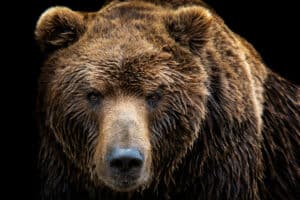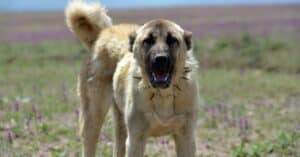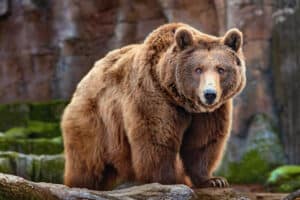Bears are known for their fur-covered bodies and powerful claws. Some swim while others climb trees. Bears come in eight different species, each with a different conservation status varying from vulnerable to least concern. Depending on the species, South America, North America, Europe, Asia, and the northernmost polar regions are possible habitats for bears. For instance, northern Canadian forests down to Central Mexico are home to the North American black bear, which encompass a few more subspecies spanning Southern Alaska to Louisiana, down to California, Vancouver, and Mexico. Since black bears occupy some parts of the American forests, this poses the question: are there bears in Florida?
North American black bears do not have a preferred climate. This bear species prefers mountainous areas. However, they are also found in meadows and marshes. This makes the occurrence of bears possible in Florida. The North American black bear has a subspecies specifically called the Florida black bear representing the bear population found in the state. This article will dive deep into Florida’s bear kingdom, its habitat, diet, and other noteworthy facts.
Are There Bears in Florida?

There are roughly 4,050 black bears in Florida.
©Roger Epps/Shutterstock.com
The quick answer is yes, there are bears in Florida. Bears had populated much of Florida’s peninsula, bigger keys, and some coastline when the early Europeans arrived. However, by the mid-1970s, its historic distribution had decreased to roughly 18% of its original size. A few of the bear population persisted in select core locations at this date. According to FWC scientists, there are roughly 4,050 black bears in Florida. Every five years, the FWC conducts a bear count. The most recent survey, conducted in 2017, found a 50 percent rise in the number of Florida black bears. The black bear is the only bear species present in Florida. There are no grizzlies, brown bears, or polar bears in the state.
The black bear, sometimes known as the American black bear, is a medium-sized bear found in a range of forested settings throughout North America. The black bear is not only the most common bear on the North American continent, with 16 identified sub-species found throughout the continent, which differ primarily in size and the region in which they inhabit. Black bears have been found in Mexico’s hot and dry perennial shrub woods and the humid hardwood marshes of the southeast United States, up to Canada’s and Alaska’s coniferous forests and the stark scrubland tundra. The Florida black bear, which is the bear’s subspecies inhabiting Florida, is commonly found in the state and other neighboring areas such as Georgia, Mississippi, and Alabama.
What Do Florida Black Bears Look Like?
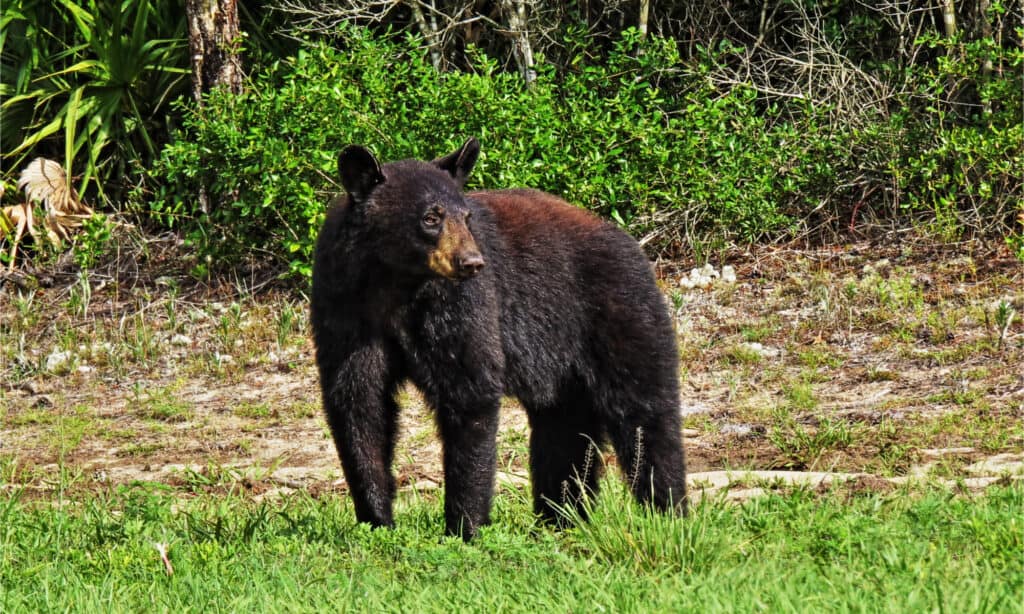
The Florida black bear is usually adorned with shiny black fur and a short tail.
©Roger Epps/Shutterstock.com
Florida black bears are known for having a white blaze on the chest. A typical male weighs 136 kg (300 lb), usually adorned with shiny black fur, a short tail, and brown fur on their muzzles in most cases. Adults often grow between 4 feet and 6 feet tall, with a shoulder height of 2.5 feet to 3.5 feet. Their tails are short, and their ears round. Some adults may also sport a diamond-shaped white breast patch. Their body weight may grow by as much as 40% in the fall to survive the winter.
Black bears are generally shy and solitary creatures. They convey their feelings in various ways, such as body language, vocalizations, and scent marking. The entire sole of a black bear’s foot touches the ground when they walk.
Where Do Bears Live in Florida?
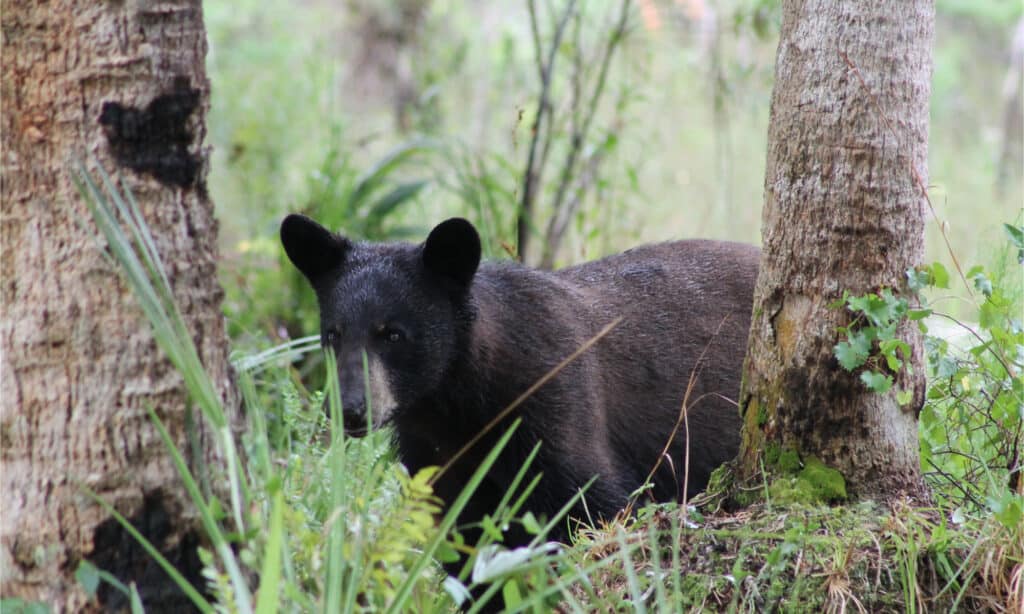
Bears in Florida commonly settle in scrub oak ridges, sand-pine scrub, and wooded wetland ecosystems.
©Robin Cabral/Shutterstock.com
Bears can be found across Florida, including the Keys. However, it appears that their habitat is currently sparse. Nearly half of Florida is home to wild bears. Florida black bears, on the other hand, are difficult to notice since they favor dense undergrowth and are afraid of humans. Bears in Florida typically dwell in locations with extensive forests where they may find plenty of food.
These species commonly settle in scrub oak ridges, sand-pine scrub, flatwoods, swamps, upland hardwood forests, and wooded wetland ecosystems and can be found practically anyplace in Florida. The American black bear subspecies also lives in dry prairie and tropical hammock to a lesser extent. A home range is an area they traverse, searching for food, water, and enough cover.
What Do Florida Black Bears Eat?
Florida black bears are omnivorous mammals with 80 percent of their diet consisting of plants, such as acorns, fruit, berries, grass, seeds, and nuts, 15% insects, and 5% animal matter, such as white-tailed deer, armadillos, and raccoons. Grass and leaves, as well as mast, make up the vegetative section of their nutrition. In addition, bears consume honey, wild pigs, and carrion occasionally. However, contrary to popular belief, most of their animal meals originate from scavenging rather than predation.
Although black bears rarely eat humans, they are capable of doing so. When a black bear targets or kills a person, it’s usually because the bear’s cubs are in danger.
Are Florida Black Bears Dangerous?
While Florida black bears aren’t usually violent, they are enormous, and as the state’s largest mammals, they are powerful and capable of reacting aggressively when provoked. There have been no predatory bear attacks yet in Florida. However, bears protecting themselves, cubs, or food sources have bitten and scratched people.
Due to an upsurge in human-bear incidents in Florida, the state has forbidden feeding bears and imposed a food storage order that prohibits individuals from putting food, garbage, or other bear baits outside unless they are stored in a bear-resistant container. Food, toiletries, pet food beverages, bird and cattle feed, and waste are all on the list of bear attractants.
Florida Black Bear Conservation Status
The International Union for Conservation of Nature has not assessed the Florida black bear subspecies. Since hunting and habitat damage decreased the population to only 300 individuals, the Florida Fish and Wildlife Conservation Commission classified this subspecies as endangered. Yet, the Florida black bear has been removed from the endangered species list after a successful conservation campaign, with over 4,000 adults back in the wild and more Florida black bears settling in the state in the last 100 years.
The photo featured at the top of this post is © Roger Epps/Shutterstock.com
Thank you for reading! Have some feedback for us? Contact the AZ Animals editorial team.



